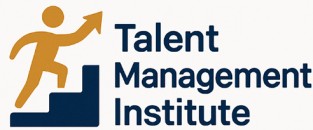
Understanding the Importance of Staffing Evaluation
{"Why Evaluating Staffing Needs is Essential for Business Success
Understanding the significance of staffing evaluation can be a game-changer for businesses. In the competitive world of talent management, effectively assessing your professional staffing needs is crucial to avoid unnecessary expenses and maximize productivity. Professional staffing helps businesses hire the right candidates, ensuring they meet market demands both in the short and long term.
Staffing evaluation can involve assessing current staffing levels, forecasting future needs, and identifying skills gaps. This not only optimizes the hiring process but also improves workforce efficiency. Utilizing staffing agencies or staffing firms can be beneficial. These entities provide staffing services that bring in top talent, whether it's for temporary staffing or full-time positions, and help tailor staffing solutions to specific business needs.
The importance of this evaluation is supported by the need to align hires with business goals. By doing so, companies enhance their recruitment process and reduce the time to hire, securing qualified candidates who fit the organizational culture. Our blog post on enhancing recruitment strategies with a comprehensive hiring dashboard delves deeper into tools that facilitate effective staffing evaluation, ensuring a smoother hiring process and better recruitment outcomes.
Next, we look at the key metrics for gauging staffing needs, which highlight the strategic role of data in making informed staffing decisions.
Key Metrics for Assessing Staffing Needs
Evaluating Critical Staffing Metrics
To effectively assess your professional staffing needs, understanding key metrics is essential in determining gaps and opportunities within your workforce. Staffing agencies and businesses alike benefit from closely monitoring these indicators to facilitate optimal recruitment processes and hire the best candidates.
Here's a rundown of critical metrics for assessing staffing needs:
- Time to Hire: This metric reflects the speed and efficiency of the hiring process. A shorter time to hire can help companies fill vacancies more rapidly, reducing the risk of losing top talent to competitors. It can also enhance the candidate experience, portraying your agency or business as a well-organized and professional operation.
- Cost Per Hire: Calculating the total expenses associated with hiring, including recruitment agency fees, job advertisements, and resource allocations, gives insights into the financial efficiency of your staffing strategies. This figure can help in budget planning for temporary staffing or long-term professional staffing solutions.
- Quality of Hire: Quality metrics go beyond mere qualifications and encompass factors such as cultural fit, job performance, and retention rates. High-quality hires contribute to the overall success and growth of an organization by ensuring the right talent is placed in the right roles.
- Turnover Rate: Monitoring employee turnover rates provides a clear picture of workforce stability. High turnover can indicate issues within the work environment or recruitment process and may demand a thorough review of staffing solutions and services staffing strategies.
- Fill Rate: This measures the efficiency and effectiveness of a staffing agency or firm in placing candidates in open positions. A higher fill rate indicates success in matching qualified candidates to roles, contributing to business continuity and productivity.
Focusing on these metrics allows companies to refine their staffing services and ensure they are hiring the right talent at the right time. By continuously assessing these metrics, organizations can improve their staffing strategy, ultimately contributing to business success. To further enhance your understanding of optimizing the hiring process, you can explore optimization techniques employed by leading firms in the industry.
Tools and Techniques for Staffing Assessment
Evaluating Your Hiring Tools and Techniques
Assessing professional staffing needs effectively requires the right set of tools and techniques. These methods help streamline the hiring process and ensure that companies can recruit the best talent that aligns with their business objectives. Let's delve into how these elements come together:
- Applicant Tracking Systems (ATS): An ATS can be instrumental in managing job applications and tracking candidates throughout the recruitment process. This tool allows staffing professionals to handle large volumes of candidate data efficiently and identify qualified candidates quickly.
- Workforce Analytics: Data-driven insights can significantly influence staffing decisions. By analyzing recruitment data, companies can predict trends, optimize the time to hire, and make informed decisions aligned with their long-term goals.
- Recruitment Agencies: Engaging staffing firms or temporary staffing agencies can provide access to a broader pool of candidates. These agencies offer services that enhance the cultural fit by presenting candidates who align with a company's values.
- Behavioral Assessments: These assessments help evaluate not just the skills but the personality and attitude of potential hires. This ensures a better match between candidates and organizational culture.
- Temporary Staffing Solutions: For businesses looking to fill immediate gaps, partnering with a staffing agency for temp hire solutions can be effective. It helps in adjusting workforce size according to current needs without long-term commitments.
With technologies and methodologies continuously evolving, staying updated with the new processes can significantly impact your recruitment outcomes. Companies leveraging these modern tools often find themselves better equipped in the ever-competitive hunt for top talent. Explore opportunities to enhance your staffing strategies and stay ahead in the game.
Common Challenges in Staffing Evaluation
Overcoming Hurdles in Staffing Evaluations
Assessing staffing needs effectively on an organizational level is not without its challenges. These obstacles can stem from various sources and understanding them is essential to refining your talent management strategies. Let's explore some common challenges firms face when evaluating staffing requirements and suggest strategies to overcome them.- Dynamic Business Environments: Companies often struggle to maintain an accurate assessment of their staffing needs due to rapidly changing business conditions. It's crucial to have a flexible staffing strategy that allows for quick adjustments as conditions evolve. Hiring professionals and temporary staffing services can provide the necessary agility.
- Alignment with Organizational Goals: Ensuring that staffing levels align with long-term business objectives can be difficult. Often, there is a disconnect between the strategic goals and the actual staffing decisions. Regularly revisiting and communicating these goals can help bridge this gap.
- Finding Qualified Candidates: The recruitment process can be hindered by a scarcity of top talent, making it challenging to fill open positions with qualified candidates. Utilizing staffing agencies can expand your reach and provide access to a broader pool of job seekers.
- Cultural Fit Considerations: A candidate who matches the company culture is often a higher priority than skill set alone. However, assessing cultural fit is inherently subjective, making it a common challenge during the hiring process. Involving multiple decision-makers and integrating cultural fit assessments into the recruitment process can help mitigate this issue.
- Time Constraints: The time taken to hire can be a major challenge, especially when positions are left unfilled for extended periods. Streamlining the recruitment process and utilizing staffing solutions like temp hires can help reduce the time to hire, ensuring business operations are not interrupted.
Best Practices for Optimizing Staffing Decisions
Implementing Strategic Staffing Solutions
Optimizing staffing decisions is crucial for ensuring your business remains competitive and efficient. Here are some best practices to help you make informed choices:
- Align Staffing with Business Goals: Understand your company's long-term objectives and ensure your staffing strategy supports these goals. This alignment helps in hiring the right talent that can drive the business forward.
- Utilize Data-Driven Insights: Leverage key metrics and analytics to assess your staffing needs accurately. This approach allows you to identify gaps and opportunities within your workforce, ensuring you hire qualified candidates who fit your company's culture.
- Engage with Professional Staffing Agencies: Collaborate with staffing agencies that specialize in your industry. These agencies have access to a wide pool of candidates and can help streamline the recruitment process, saving you time and resources.
- Focus on Cultural Fit: Beyond skills and experience, consider how potential hires align with your company's values and culture. A good cultural fit can enhance team dynamics and improve employee retention.
- Embrace Flexible Staffing Solutions: Consider temporary staffing or temp hires to address short-term needs without committing to long-term contracts. This flexibility can be particularly beneficial during peak business periods or when specific expertise is required.
- Continuous Evaluation and Adjustment: Regularly review your staffing strategies and make adjustments as necessary. This ongoing process ensures that your workforce remains agile and responsive to changing business demands.
By implementing these best practices, companies can optimize their staffing decisions, ensuring they have the right talent in place to meet their business objectives effectively.
Case Studies: Successful Staffing Evaluations
Real-World Examples of Staffing Evaluations Done Right
Gleaning insights from real-world cases of successful staffing evaluations can significantly aid businesses in refining their strategies. Let's explore some instances where companies have effectively managed their staffing needs, leading to substantial improvements in their recruitment and hiring processes.- Tech Company Leveraging Data Analytics: A leading technology firm utilized data analytics to scrutinize key metrics like time-to-hire and cultural fit. By doing so, they managed to streamline their recruitment process significantly. This approach not only enabled them to reduce hiring times but also improved the quality of hired candidates, ensuring they align with the company's goals and culture.
- Retail Giant's Partnership with Staffing Agencies: A prominent retail business observed a substantial improvement in hiring efficiency after partnering with specialized staffing firms. These agencies helped the company meet both temporary and long-term staffing requirements by sourcing qualified candidates tailored precisely to their needs. This relationship allowed the company to adapt swiftly to market demands without compromising on talent quality.
- Finance Sector's Innovative Temporary Staffing Solutions: A notable financial services company faced a pressing need for a flexible, on-demand workforce. They turned to temp hire solutions to meet fluctuating staffing demands during peak seasons. This strategic decision enabled them to maintain operational efficiency and manage costs effectively while still resorting to top-notch staffing services.
- Healthcare Provider's Revamp of Hiring Processes: A healthcare provider revamped their hiring processes by implementing advanced tools and techniques. By focusing on professional staffing and cultural fit, they enhanced the selection of qualified candidates. This comprehensive overhaul yielded a remarkable boost in their staff retention rates, demonstrating the enduring benefits of strategic staffing decisions.













